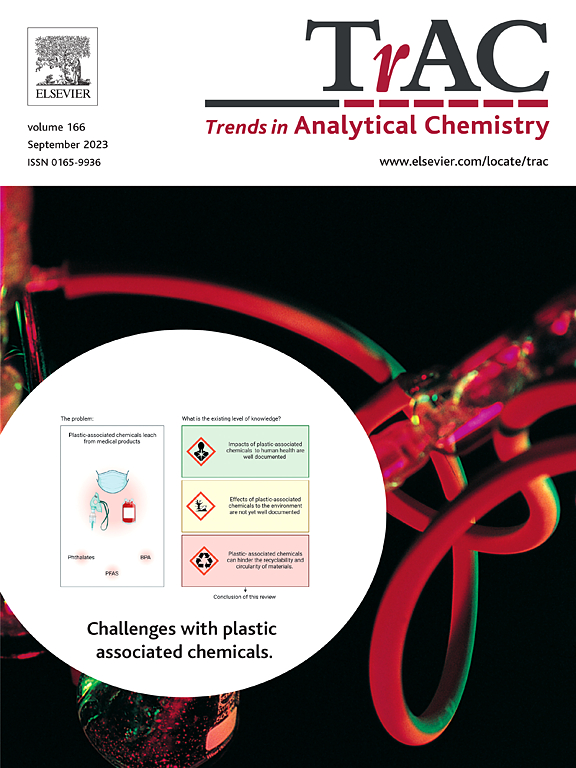用于环境水样分析的新型吸附萃取技术材料
IF 11.8
1区 化学
Q1 CHEMISTRY, ANALYTICAL
引用次数: 0
摘要
开发新材料以改进分析程序中的样品制备步骤,是分析化学领域最重要的研究方向之一,目的是提高这一步骤的灵敏度或选择性。最常用的吸附萃取技术包括固相萃取(SPE)、磁性固相萃取(MSPE)、分散固相萃取(dSPE)和固相微萃取(SPME)或搅拌棒吸附萃取(SBSE)。最重要的材料可分为聚合物基、硅基、碳基、金属有机框架(MOFs)和共价有机框架(COFs)。在本综述中,我们概述了自 2018 年以来报道的用于吸附萃取技术的最相关内部材料,这些材料用于从水样中萃取污染物。我们还介绍了每种材料最重要的特性,以及如何利用这些特性萃取分析物。此外,我们还讨论了这些材料和萃取程序的几个应用实例,并强调了最相关的方面。本文章由计算机程序翻译,如有差异,请以英文原文为准。
Novel materials for sorptive extraction techniques for the analysis of environmental water samples
Developing new materials for improving the sample preparation step in analytical procedures is one of the most important research lines in analytical chemistry in order to improve the sensitivity or selectivity in this step. The sorptive extraction techniques most commonly used are solid-phase extraction (SPE), magnetic solid-phase extraction (MSPE), dispersive solid-phase extraction (dSPE) and solid-phase microextraction (SPME) or stir bar sorptive extraction (SBSE). The most important materials can be grouped into polymer-based, silica-based, carbon-based, metal organic frameworks (MOFs) and covalent organic frameworks (COFs). These materials can also be combined.
In this review, we present an overview of the most relevant in-house materials used in sorptive extraction techniques that have been reported for extracting contaminants from water samples since 2018. The most important properties that characterize each type of material and how they are exploited to extract the analytes are also presented. In addition, we discuss several examples of applications of these materials and the extraction procedures and highlight the most relevant aspects.
求助全文
通过发布文献求助,成功后即可免费获取论文全文。
去求助
来源期刊

Trends in Analytical Chemistry
化学-分析化学
CiteScore
20.00
自引率
4.60%
发文量
257
审稿时长
3.4 months
期刊介绍:
TrAC publishes succinct and critical overviews of recent advancements in analytical chemistry, designed to assist analytical chemists and other users of analytical techniques. These reviews offer excellent, up-to-date, and timely coverage of various topics within analytical chemistry. Encompassing areas such as analytical instrumentation, biomedical analysis, biomolecular analysis, biosensors, chemical analysis, chemometrics, clinical chemistry, drug discovery, environmental analysis and monitoring, food analysis, forensic science, laboratory automation, materials science, metabolomics, pesticide-residue analysis, pharmaceutical analysis, proteomics, surface science, and water analysis and monitoring, these critical reviews provide comprehensive insights for practitioners in the field.
 求助内容:
求助内容: 应助结果提醒方式:
应助结果提醒方式:


